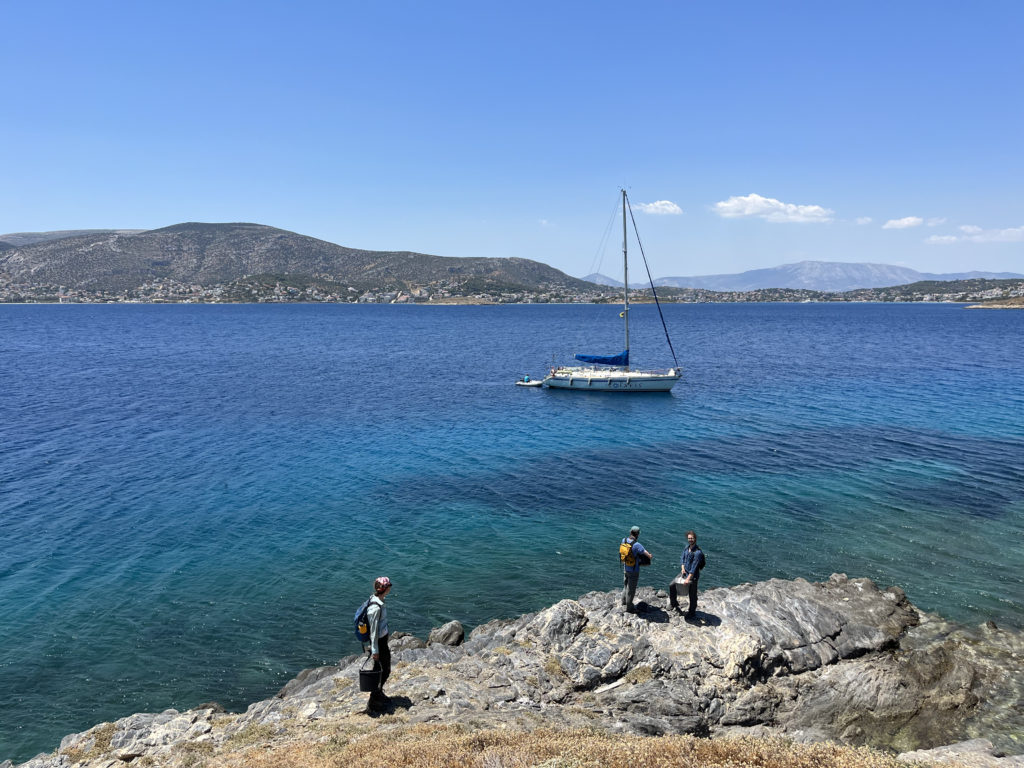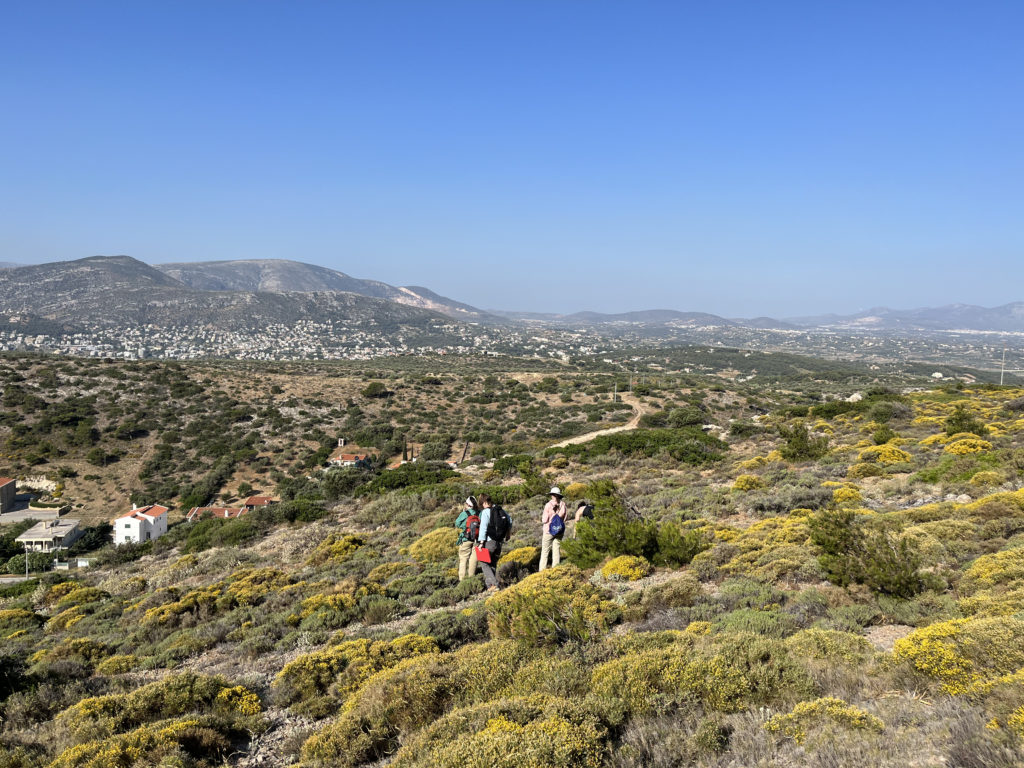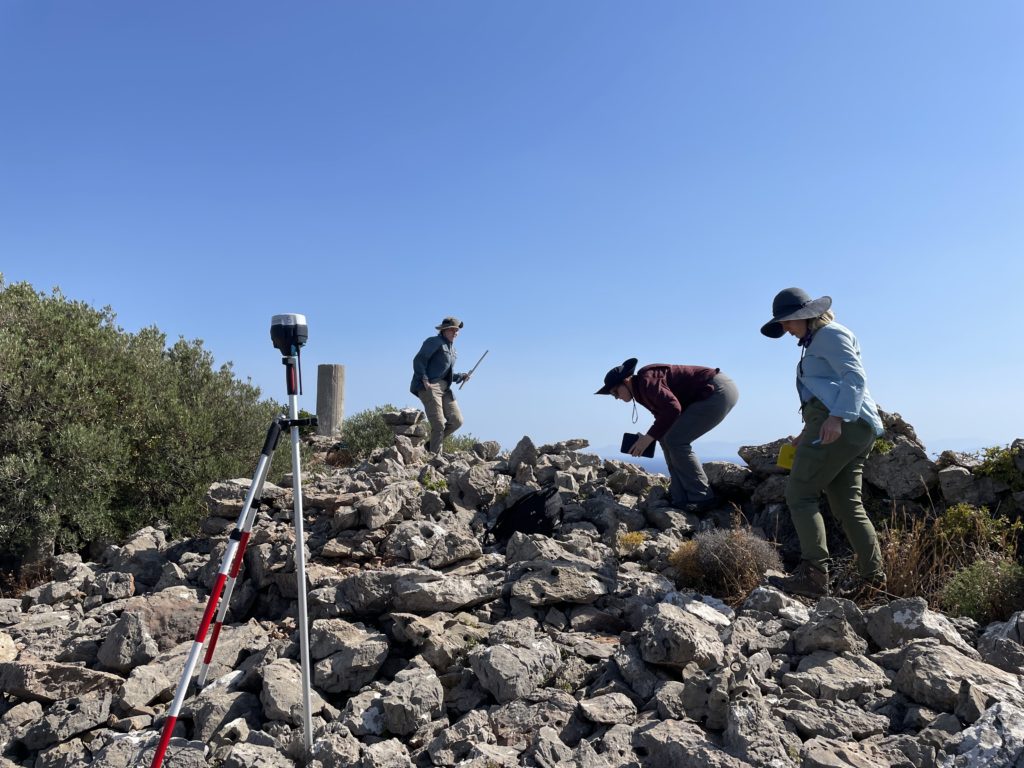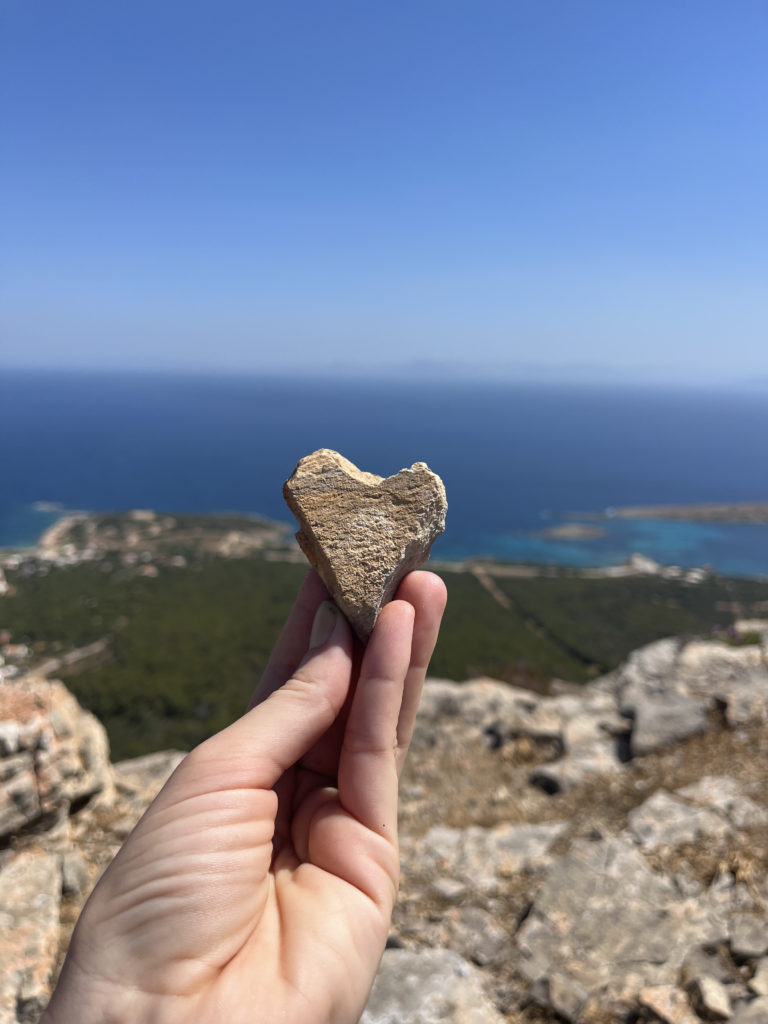
Team 1: Return to Raftis Island
Fans of BEARS will know that in 2019, we conducted gridded collection on about half of Raphtis island – the distinctive pyramidal island in the Bay of Porto Raphti, famous for the Roman statue set atop its peak. Fieldwork on Raphtis in 2019 yielded a dense and varied scatter of mostly LH IIIC and Late Roman finds. We hope to finish gridded collection on the island this summer (where possible – the topography is extremely steep in places!) and gain a better understanding of the nature of the assemblage there in these different periods. True to form, Raphtis is producing ceramics and lithics galore, with the favorite find of the week so far being a Mycenaean dog figurine. Raphtis’ “little sister” island of Raphtopoula, located to its northwest, is another potential candidate for survey this year, if we can figure out how best to approach its rocky cliffs.

Team 2: Intensive survey in a highly developed environment
Much of our BEARS fieldwork during 2019 and 2021 focused on archaeological sites that were previously known, whether via extensive survey or excavation. This year, however, we’re seeking to gain a clearer sense of the distribution of finds around the bay by conducting intensive pedestrian survey in the fields and empty lots scattered around and between the vacation homes of Porto Rafti. Dr. Maeve McHugh is leading the charge in this arena and has started working in Zone B, which denotes the north side of the bay. Obsidian scatters and Classical-Hellenistic pithoi are already forthcoming, and we are looking forward to finding out what other material these fields will yield.

Team 3: Architectural documentation
We’re fortunate this year to be joined by Dr. Miriam Clinton from Rhodes College in Memphis, Tennessee, who is mapping and documenting architecture on the Koroni peninsula. Team members on Koroni have been measuring and photographing architectural features, as well as recording GPS points to be plotted in a GIS. The work has been focused on Koroni’s acropolis and is laying the groundwork for a detailed architectural plan of the site. We’re also very happy to welcome four undergraduate students from Rhodes College. BEARS is their first archaeological project, and we hope they will be hooked for life!
Team 4: The Brauron Museum
Finds analysis continues apace in the Brauron Museum. This week, Dr. Rob Stephan and Koroni expert Melanie Godsey have been processing the new finds from the field and reading the pottery collected from Praso in 2021. The small diachronic islet with material from every period from Early Bronze Age to Modern continues to offer new glimpses into islet life. We’re especially excited to hear what metallurgical specialist Myrto Georgakopoulou and tile expert Phil Sapirstein have to say about the fires of industry that once blazed on Praso’s shores.

We’ll be posting frequent updates and musings here throughout the 2022 season. And keep an eye out for our Photo of the Day series, back by popular demand from 2021.
